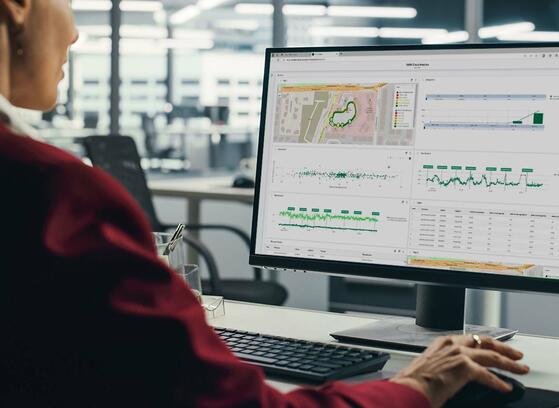Telecom networks have evolved at a staggering pace. With increasing demands for speed, capacity, and efficiency, validating network performance in the field has become more complex and more critical. Yet, many operators still rely on traditional drive testing: manual, time-consuming, and limited in scalability.
Nokia saw that evolution coming. As Martin Holecek, Head of Network Planning and Optimization at Nokia, explained to me a few days ago in a conversation, “Calling it ‘drive testing’ no longer reflected what we do.” That’s why they redefined the practice under a more holistic and future-ready term: Field Performance Validation (FPV), and when automation and AI entered the picture, it became Automated Field Performance Validation (AFPV).
That shift marks a new era for how network validation is done: faster, smarter, and more sustainable. And it’s at the heart of Nokia’s partnership with Infovista.
A market pushed by efficiency, accuracy, and scale
The telecom industry faces an ongoing challenge: revenues remain flat, but network complexity and customer expectations continue to rise. Operators are under pressure to deploy, validate, and optimize networks faster, without adding cost or headcount.
As Martin confessed, “the only way we can achieve lower cost is through innovation and automation.” For Nokia, validating hundreds of thousands of sites every year requires tools and processes that deliver speed, accuracy, and repeatability at scale.
That’s where Nokia's collaboration with Infovista, and the integration of TEMS™, comes in.
Co-innovation in action: How Nokia and Infovista have redefined field validation
Since 2021, Nokia has used Infovista’s TEMS solution to automate field performance validation across its global projects. The result translates to process efficiency and a fundamental transformation in how network optimization is managed, from the field engineer’s workflow to the data analytics layer.
Now, by combining Nokia’s AI capabilities with Infovista’s network testing cloud-based platform, the new joint solution delivers:
- 98% reduction in reporting time, from hours to just 15 minutes.
- 20% productivity increase in troubleshooting, thanks to automated root-cause analysis and “bad spot” identification.
- 28% reduction in repeat drive tests, cutting costs, CO₂ emissions, and on-road risk.
Nokia has reduced its field validation reporting time by 98%
These results demonstrate how automation and AI are reshaping not only field performance validation but also the broader discipline of 5G network testing, enabling operators to validate advanced technologies faster, improve quality of experience, and optimize performance.
Scale, speed, and sustainability proven in the field
The scale of Nokia’s operations puts these results into perspective. In 2025 alone, the company expects to perform around half a million field performance validations globally.
Roughly half of those are conducted in the field with test vehicles and engineers, and more than 56% of those rely on Infovista’s TEMS solution.
56%+ of 250± million field performance validations made by Nokia rely on Infovista’s TEMS solution
Together, Nokia and Infovista have deployed 14 live implementations of the solution, with five more being onboarded and three planned next. From Tier 1 operators in India and North America to projects across Europe, Asia-Pacific, and Australia, the partnership supports field performance validation in some of the world’s largest and most demanding networks.
This scale demonstrates the reliability and adaptability of the solution, but also its sustainability benefits: fewer drive tests mean fewer vehicles, lower emissions, and reduced safety risks for field teams.
AI-powered root-cause analysis: a foundation for what’s next
One of the key outcomes of the collaboration has been the integration of AI-powered root-cause analysis (RCA) into the validation workflow. Instead of manually reviewing logs and spotting anomalies, engineers can now rely on automated insights that pinpoint the source of issues and propose corrective actions.
This automation enables Nokia to accelerate troubleshooting and increase accuracy and consistency across teams and regions. In the words of Martin, “The machine applies rules and produces results with less probability for error.”
Looking ahead, from both teams we see this as just the beginning. With Agentic AI on the horizon of telecom, the next evolution of automation could see field performance validation become truly autonomous, using drones, rovers, and intelligent agents that trigger and analyze tests automatically, without human intervention.
As Martin has noted, “Although this might sound years away, we could start seeing this in 2026.”
At Infovista, we are already preparing for this future by embedding AI agents into our product roadmap, enabling operators to turn domain expertise into autonomous network assurance workflows.
A partnership built on shared vision: setting the standard for the future of network validation
From the start, Nokia and Infovista have shared the same goal: to make network validation faster, smarter, and more sustainable through co-innovation.
That shared vision has transformed a traditional vendor–customer relationship into a genuine partnership built on trust, feedback, and continuous improvement.
Automated Field Performance Validation now stands as the benchmark for how operators can ensure network quality in an increasingly complex and large-scale environment.
It’s happening now, and it shows what’s possible when two technology leaders co-innovate to bring automation and AI from concept to reality.








